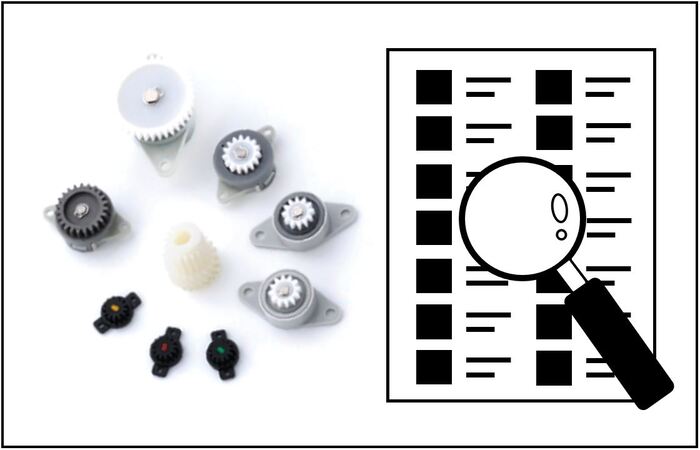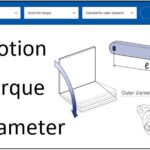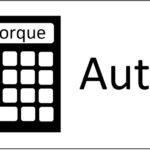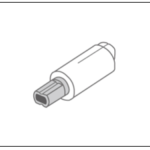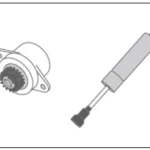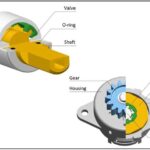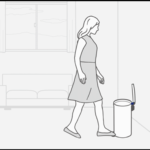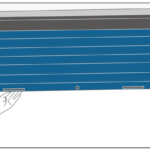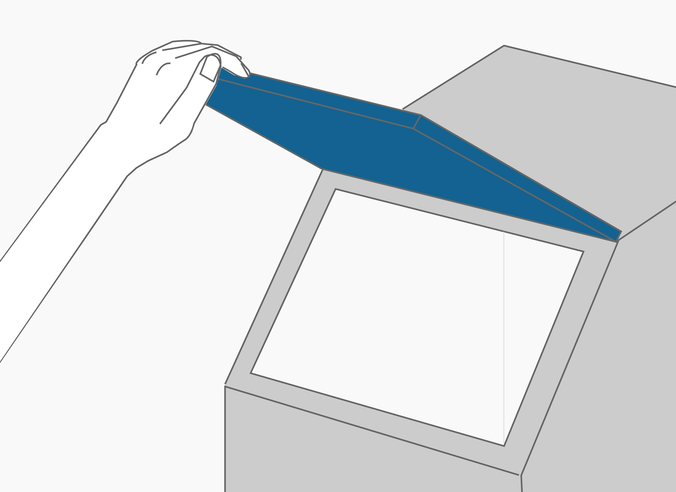
Have you ever felt that when you install a typical rotary damper on a lid that closes at an oblique angle, the damper takes time to work?
Typical rotary dampers have torque characteristics designed for lids that close horizontally. Therefore, when they are used on a lid that closes at an angle (slanted box), the lid will close more vigorously in the beginning, and then close slowly just before it closes completely, but there may be cases where you prefer to close the lid slowly from start to finish.
If you want to move lids slowly throughout their operation range, we recommend rotary dampers suitable for slanted closure. In this article, we will explain the selection of rotary dampers for lids with slanted closure and some design considerations.
Contents
- Selecting an incorrect rotary damper affects the motion of a slanted box
- Correct selection of rotary dampers for slanted box (Horizontal & vertical use rotary dampers)
- Design considerations when installing horizontal & vertical use rotary dampers
- Main usages
- Summary of soft close rotary damper design | How to select it for upward opening flaps
Selecting an incorrect rotary damper affects the motion of a slanted box
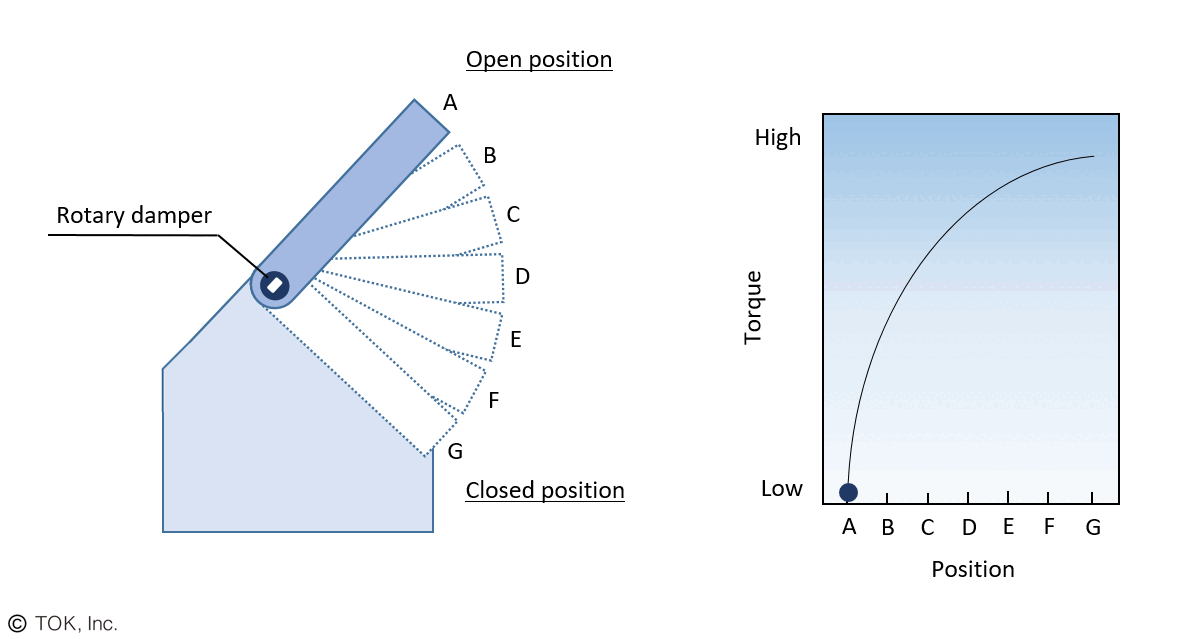
The above gif animation shows the motion of a slanted box and the torque characteristics of a typical rotary damper. A slanted box requires torque characteristics that produce maximum torque when a lid is in the horizontal position, whereas a typical rotary damper is designed to produce maximum torque just before the lid closes. In order for the lid to move slowly throughout the operation range, the torque characteristics required for the lid must be matched with the torque characteristics of the rotary damper, so typical rotary dampers cannot move slowly throughout the entire range.
Correct selection of rotary dampers for slanted box (Horizontal & vertical use rotary dampers)
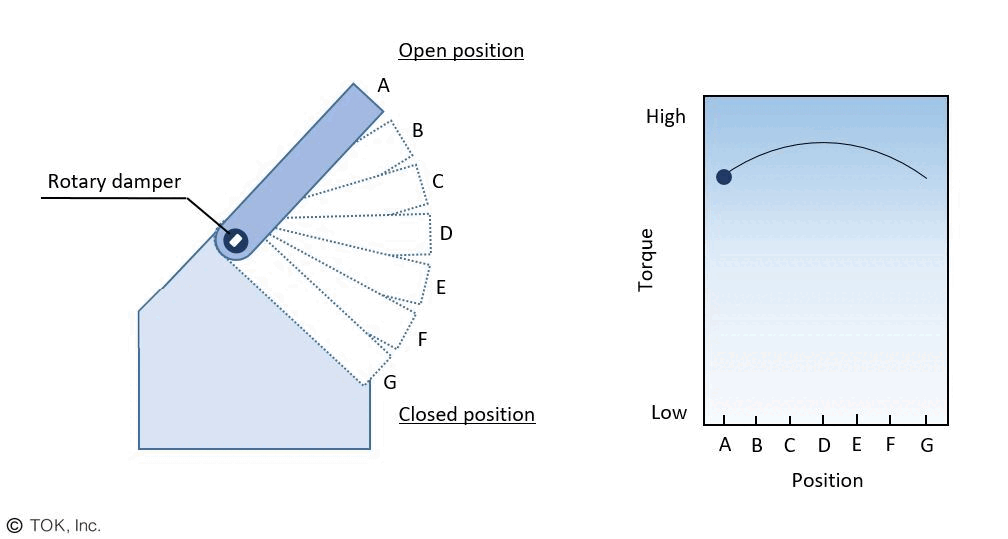
Generally, the required torque for a lid when closing needs the highest torque at the horizontal position, and the lowest torque at the vertical position. The required torque characteristics of a lid that closes at an oblique angle is low torque variation, so the rotary damper with constant torque can be used. TOK, Inc. usually says their dampers “horizontal & vertical use rotary dampers”.
You will be easy to find rotary dampers suitable for slanted boxes on our website.
Design considerations when installing horizontal & vertical use rotary dampers

In addition to selecting dampers for slanted boxes, it is essential that the operation angle should be within 110 degrees. The recommended operation angle setting is 65 degrees up and 45 degrees down from the horizontal position. Horizontal & vertical use rotary dampers have torque characteristics that assume this operation angle setting and a slow motion can be obtained over the entire operation angle range. If the operation angle is shifted by ±10 degrees while maintaining the recommended operation angle setting of 110 degrees, the lid may lose a constant closing of speed. When the desired closing feeling is not met, please contact us and we will provide advice based on the details.
Possible countermeasures include changing the oil viscosity, introducing horizontal use rotary dampers or vertical use rotary dampers, and custom design.
Main usages

Finally, here are some examples of the main usages of rotary dampers.
Trash cans
Slowly closing lids inhibit scattering of odors and prevent impact noise.
Display cases
Not only creates a sense of luxury, but also prevents breakage of breakable lids such as those made of acrylic as they are not subject to impact.
Food covers
Lids close slowly, allowing smooth putting in and drawing out foods even when both hands are occupied with trays or tongs.
This article can also be viewed in this video.
Summary of soft close rotary damper design | How to select it for upward opening flaps
To summarize the contents of this article,
・Slanted boxes require the use of horizontal & vertical use rotary dampers.
・Typical rotary dampers are designed to exert maximum torque just before closing, so they cannot close the lid slowly over the entire operation range.
・In order to move the lid slowly over the entire operation range, the torque characteristics of the rotary damper must be matched to the torque characteristics required for the lid.
・The recommended operation angle is 65 degrees up and 45 degrees down from the horizontal position.
・TOK rotary damper site has a page summarizing rotary dampers for slanted boxes.
Our website only shows standard products, but we can make customized products as well. If you are considering or have any questions about customized products, please contact us using this following form. We recommend that you make a mold when you produce the product in large quantities. If you produce the product in small quantities, you should choose the product in our catalog.
フォームが表示されるまでしばらくお待ち下さい。
恐れ入りますが、しばらくお待ちいただいてもフォームが表示されない場合は、こちらまでお問い合わせください。

